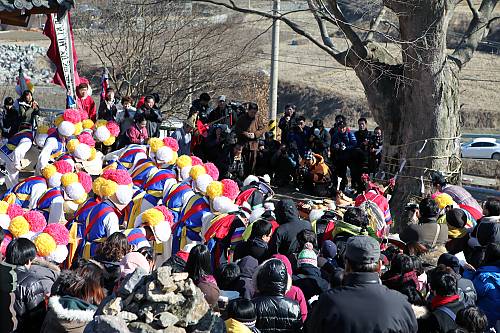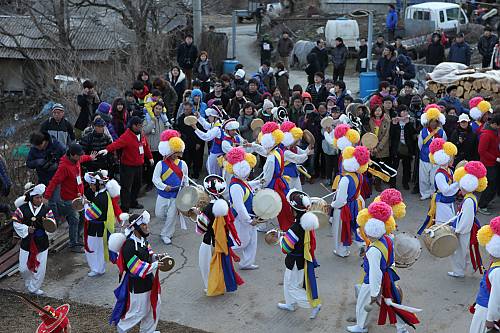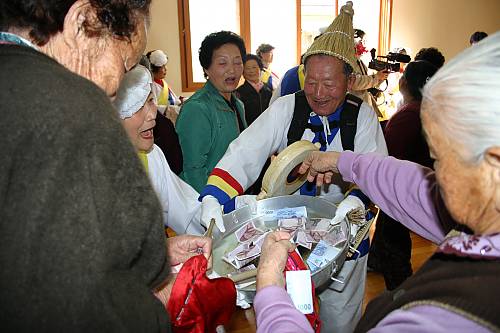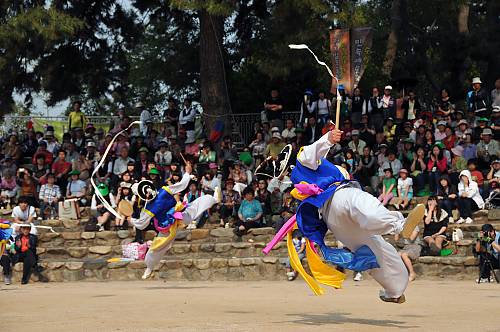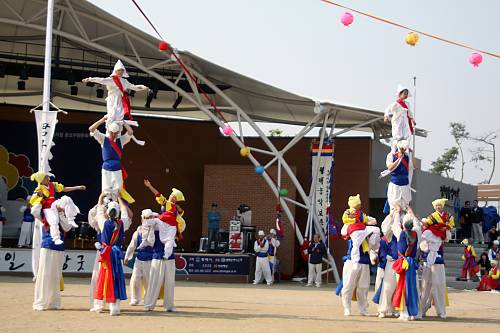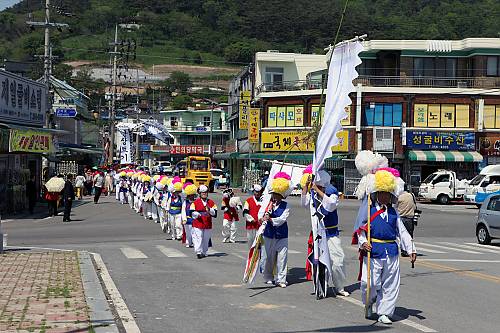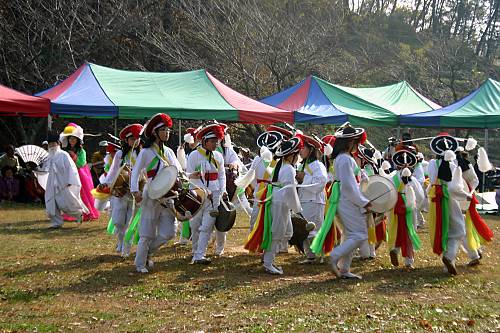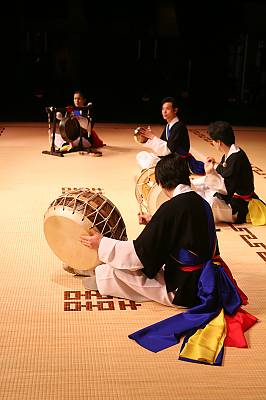Nongak, community band music, dance and rituals in the Republic of Korea
Inscribed in 2014 (9.COM) on the Representative List of the Intangible Cultural Heritage of Humanity
Nongak is a popular performing art derived from communal rites and rustic entertainments. It has evolved into a representative performing art of the Republic of Korea, combining a percussion ensemble and sometimes wind instruments, parading, dancing, drama and acrobatic feats. Local Nongak performers clad in colourful costumes perform their music and dance during community events with various purposes, such as appeasing gods, chasing evil spirits, praying for a rich harvest in spring then celebrating it during autumn festivals and fund-raising for community projects. There are distinctive regional styles of Nongak, generally divided among five cultural centres. Within each area, differences exist from one village to another in band composition, performing style, rhythm and costumes. Dancing includes choreographic formations and streamer dances while actors wearing masks and peculiar outfits also perform funny skits. Acrobatics include dish spinning and miming antics by child dancers carried on the shoulders of adult performers. The public becomes familiar with Nongak through observation and participation in its performances, while community groups and educational institutions play an important role in teaching and transmitting the different components. Nongak helps to enhance solidarity and cooperation in the community and establishes a sense of shared identity among community members.

